
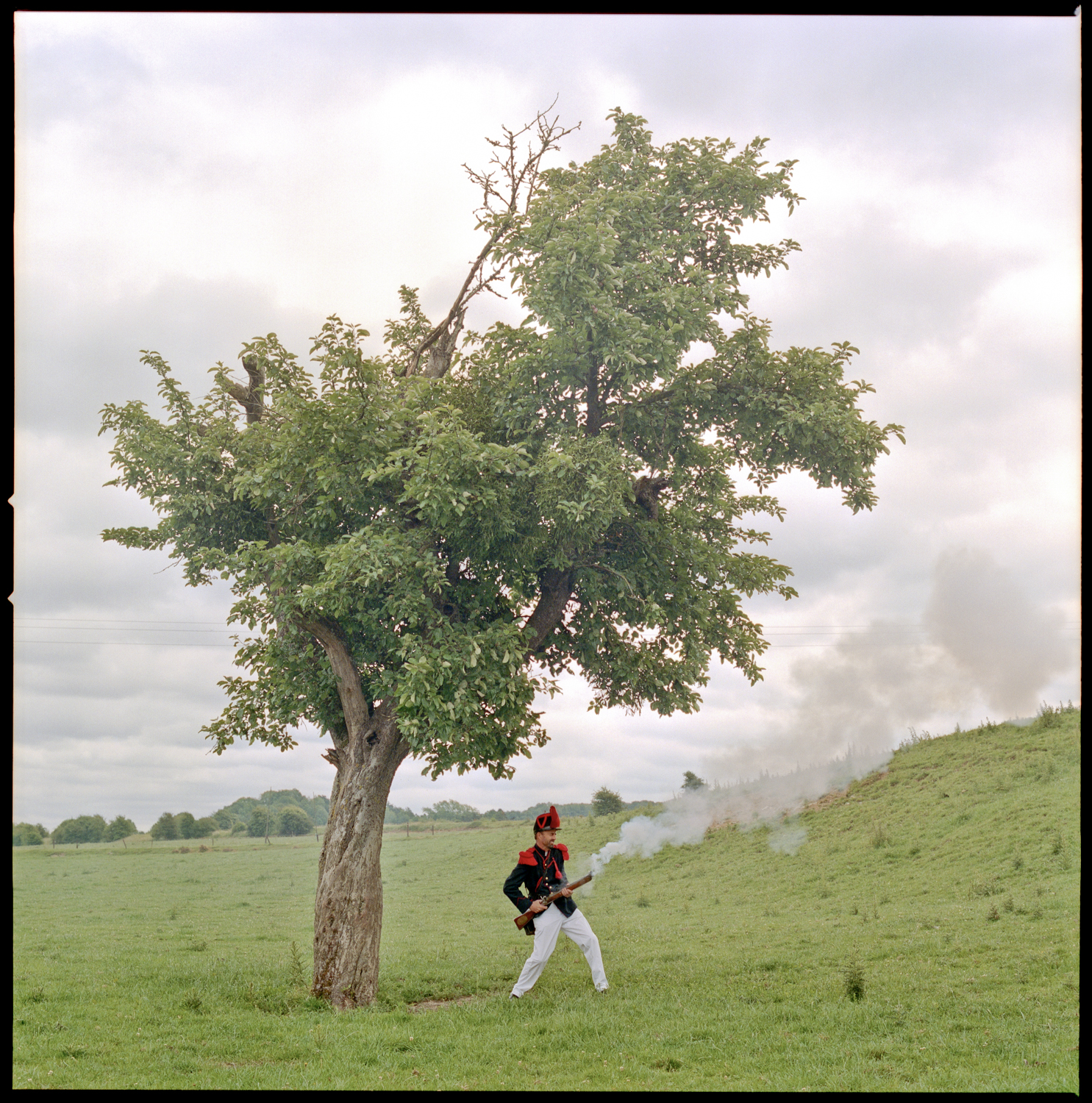


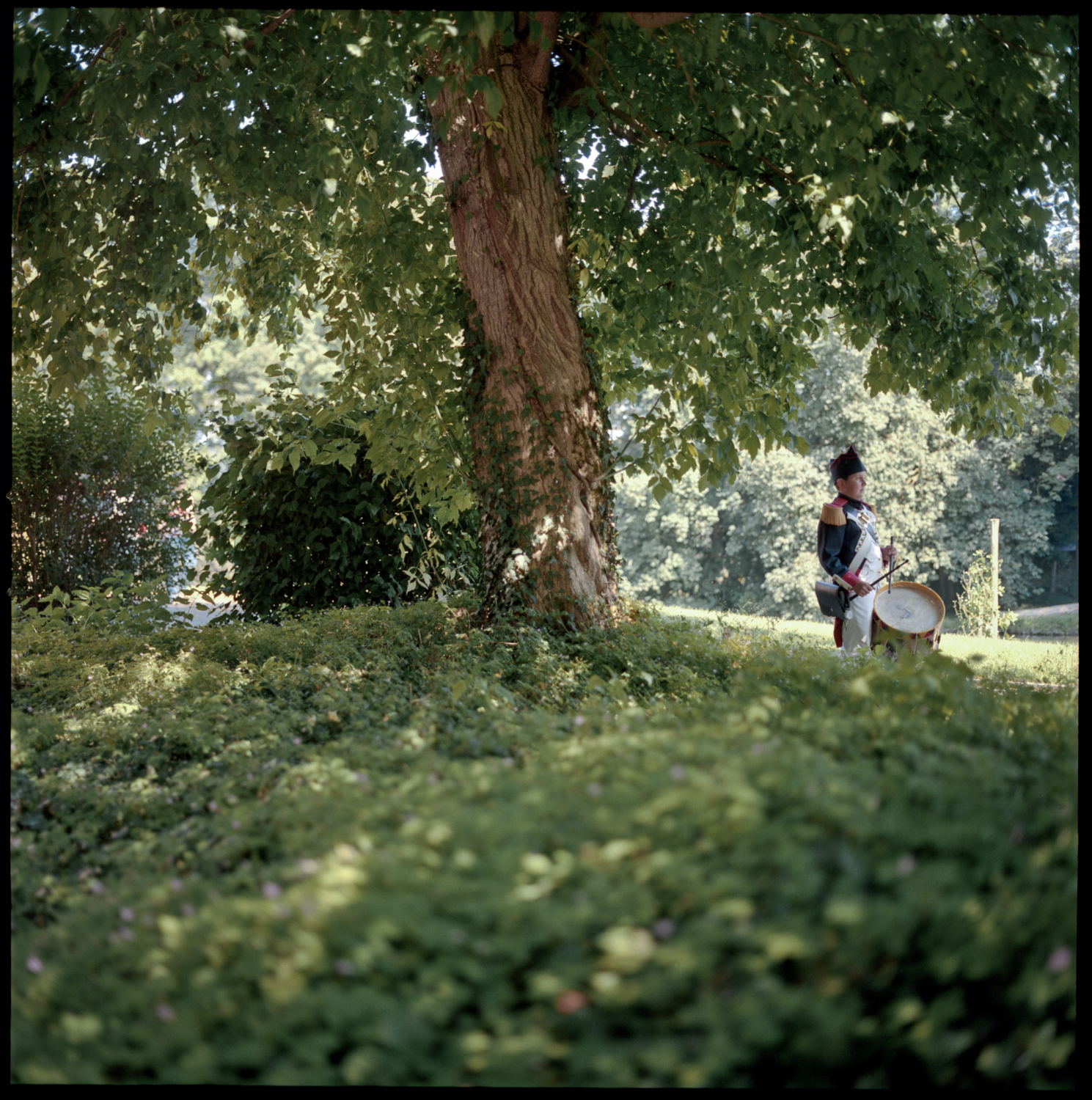

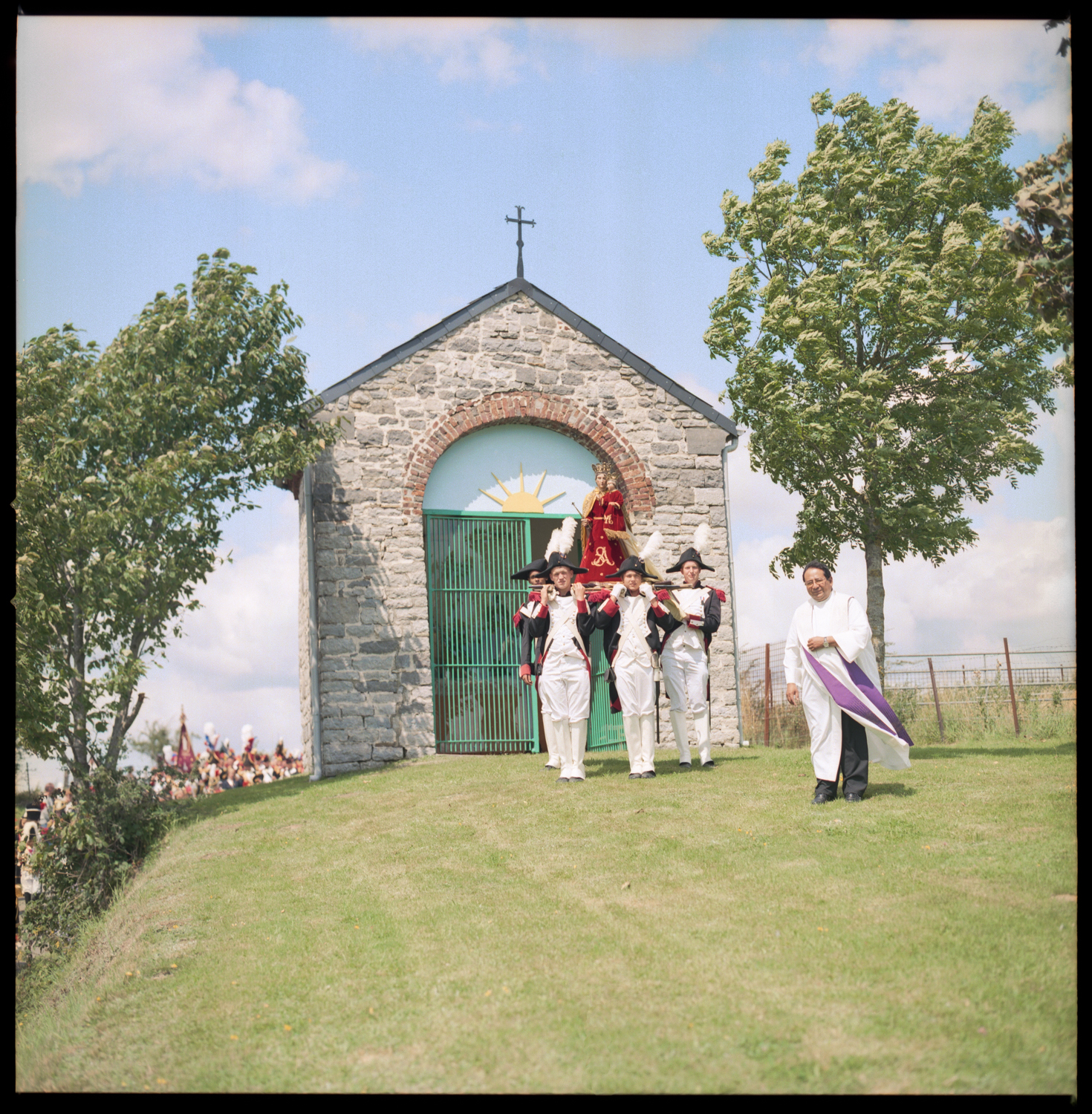


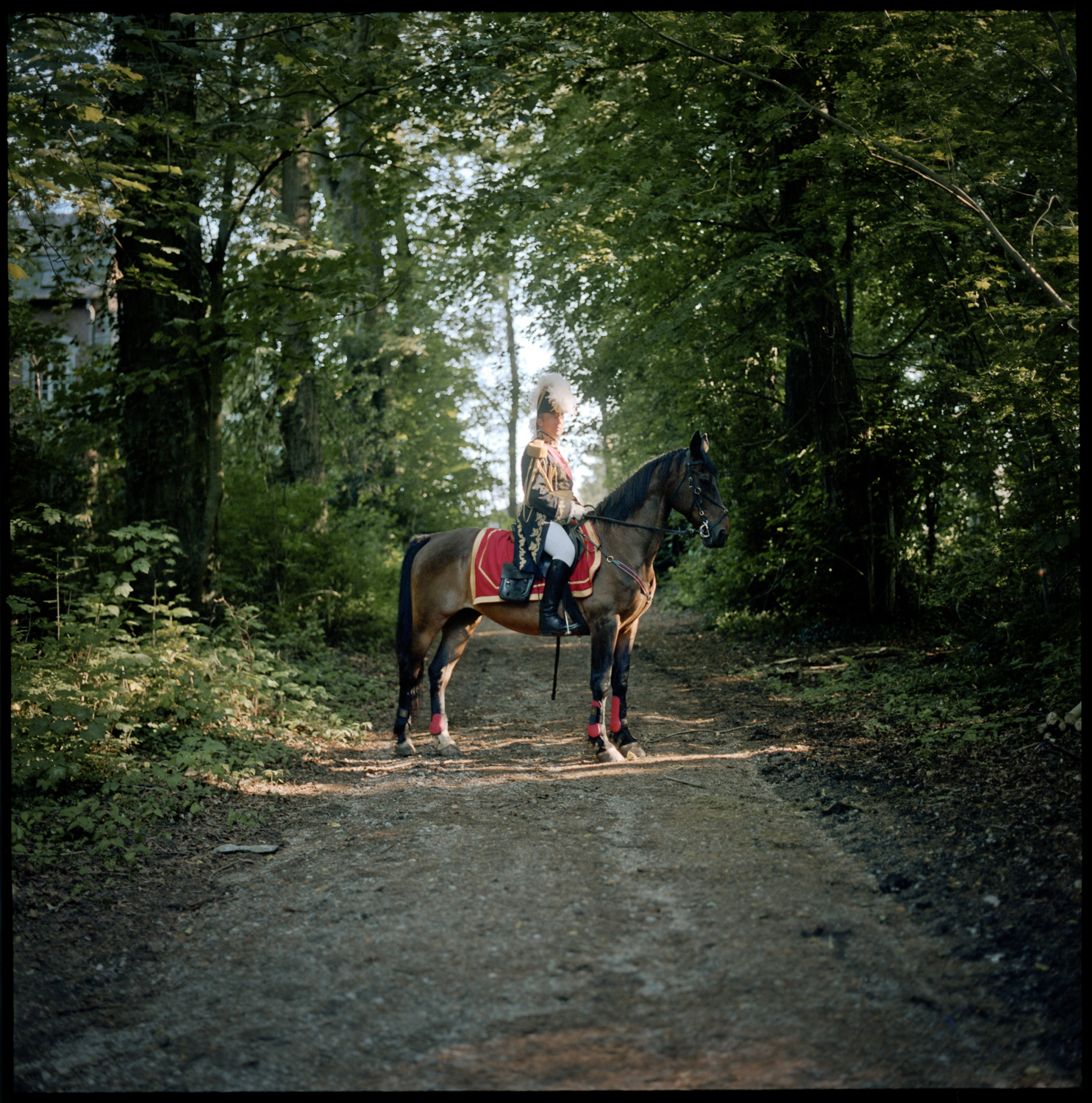
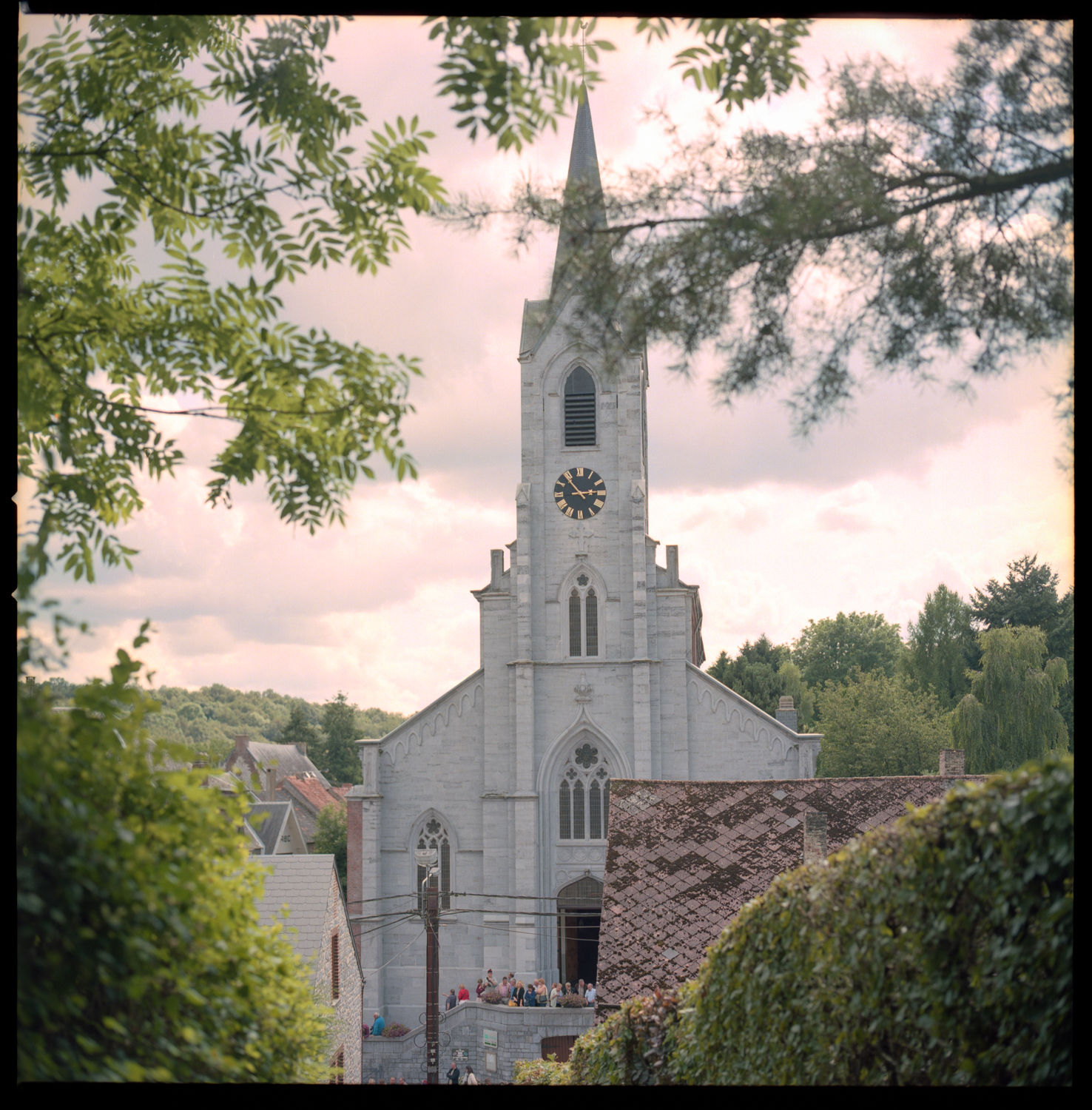

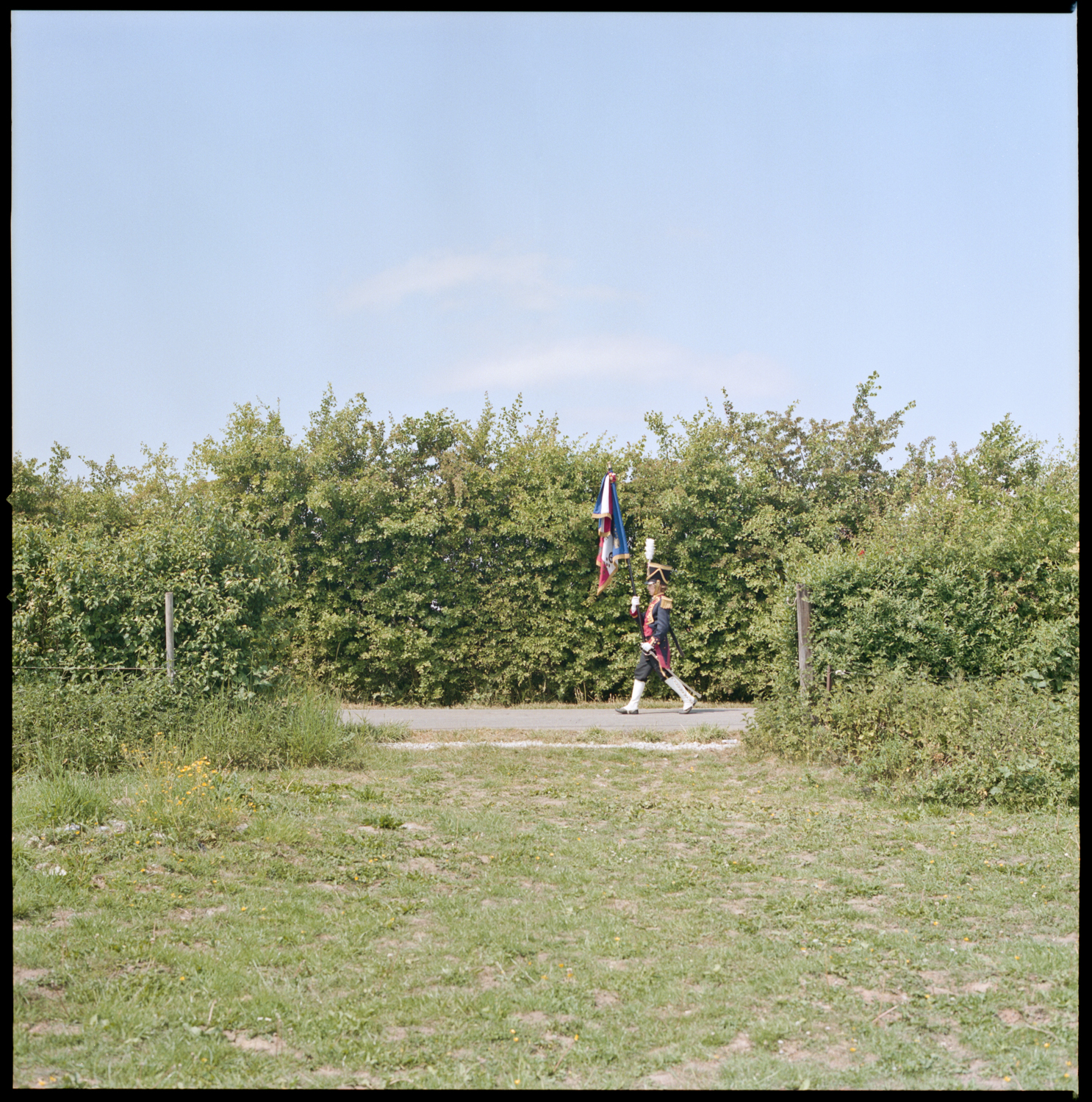

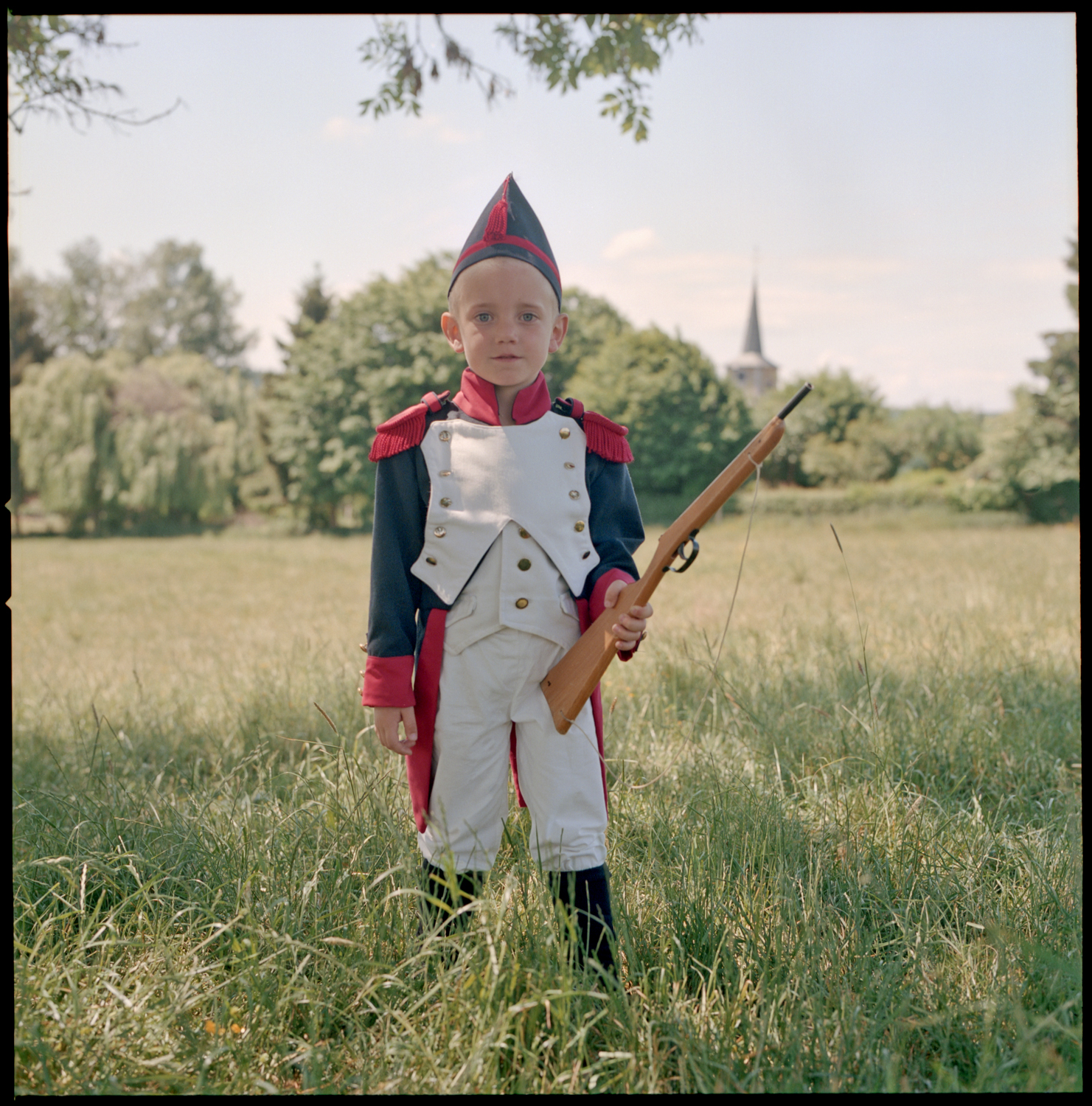
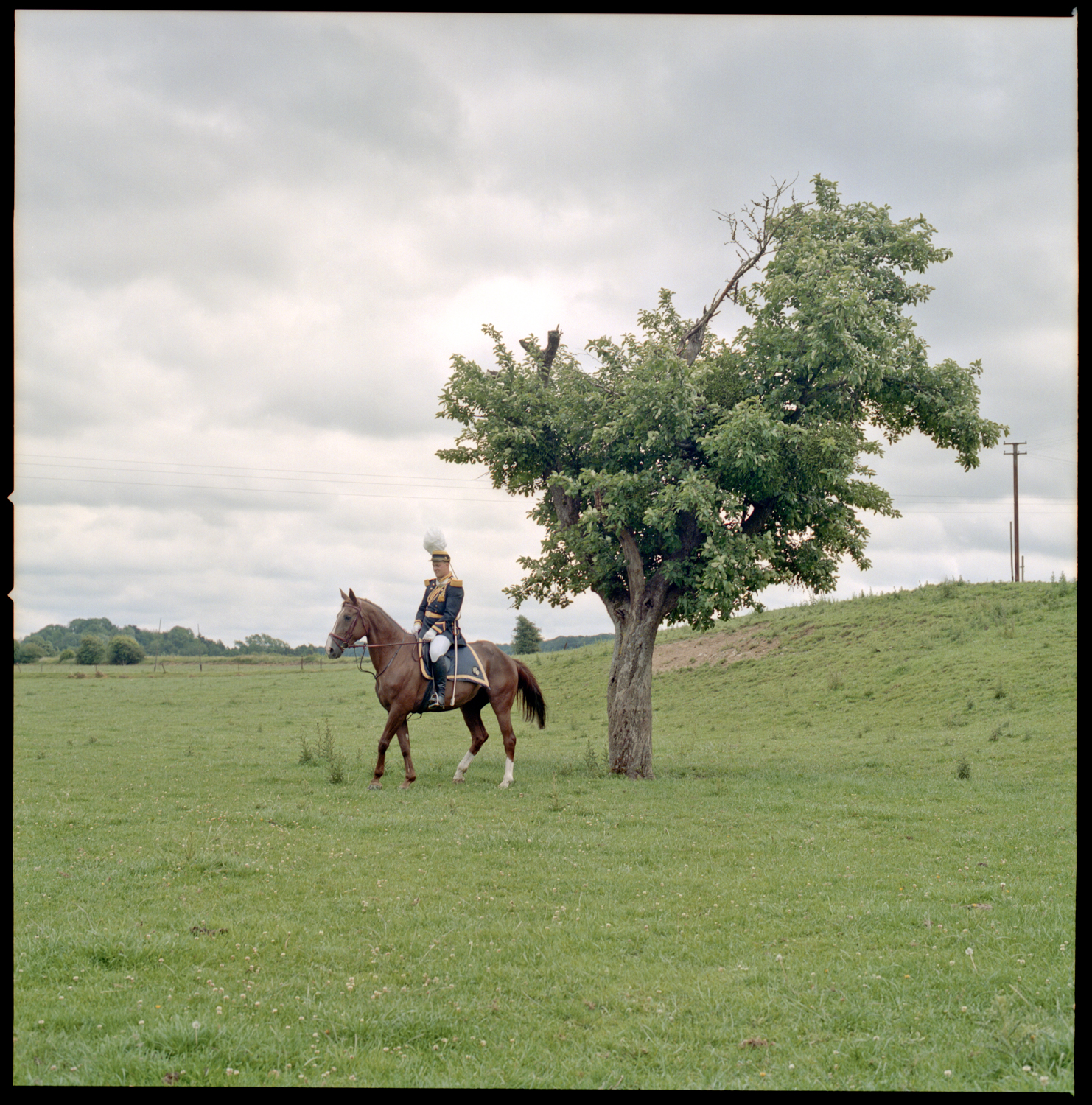
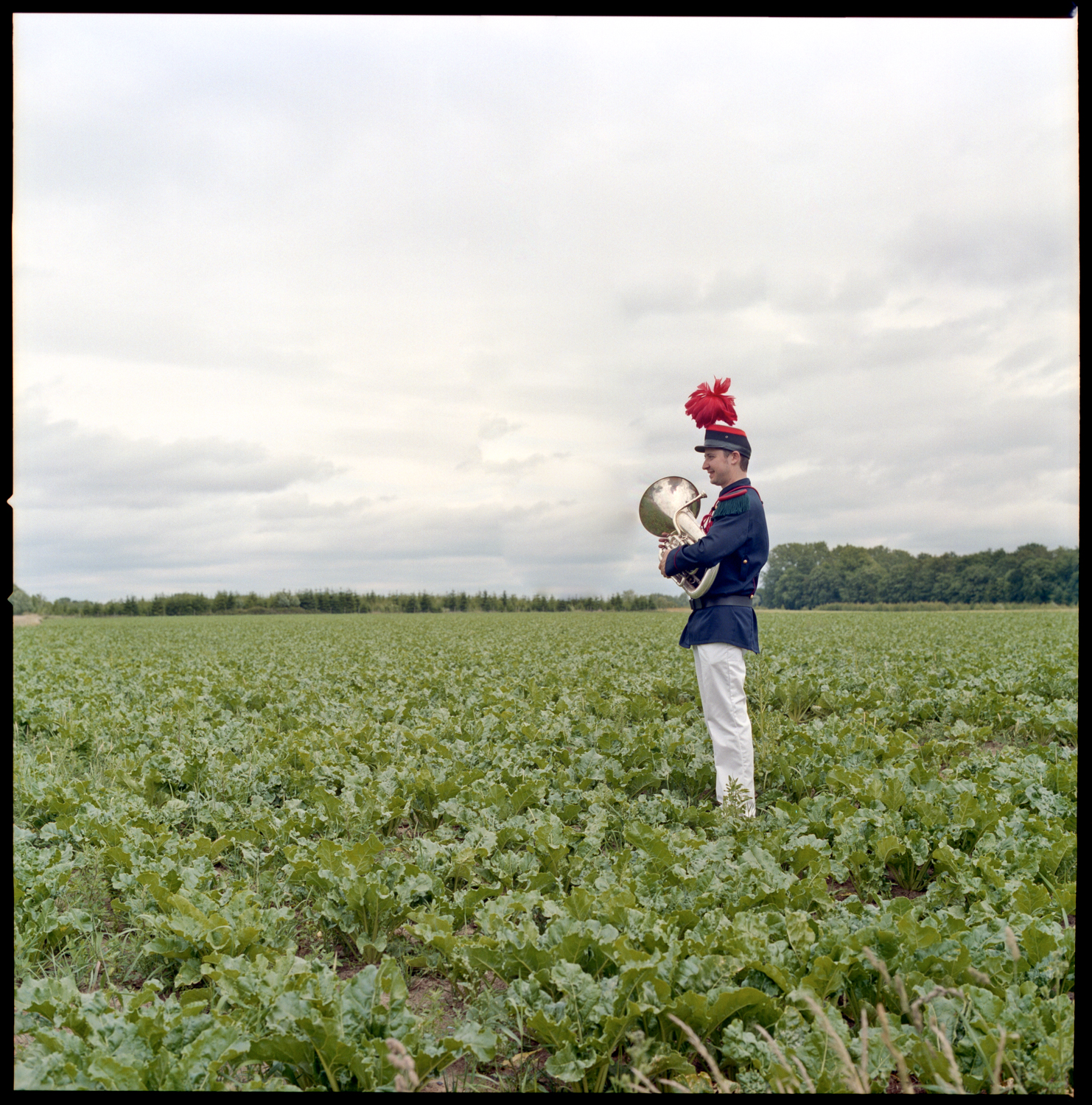
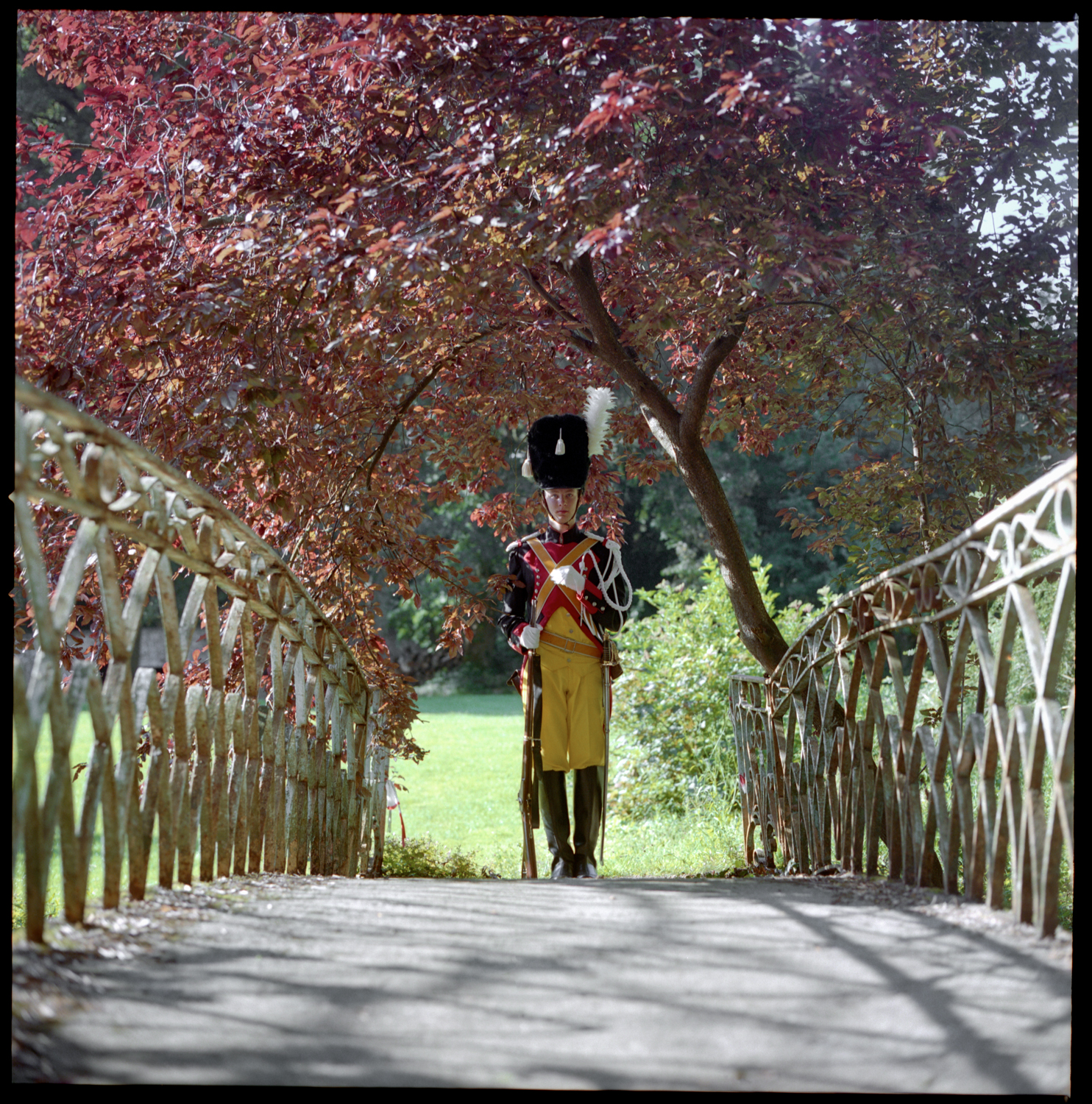



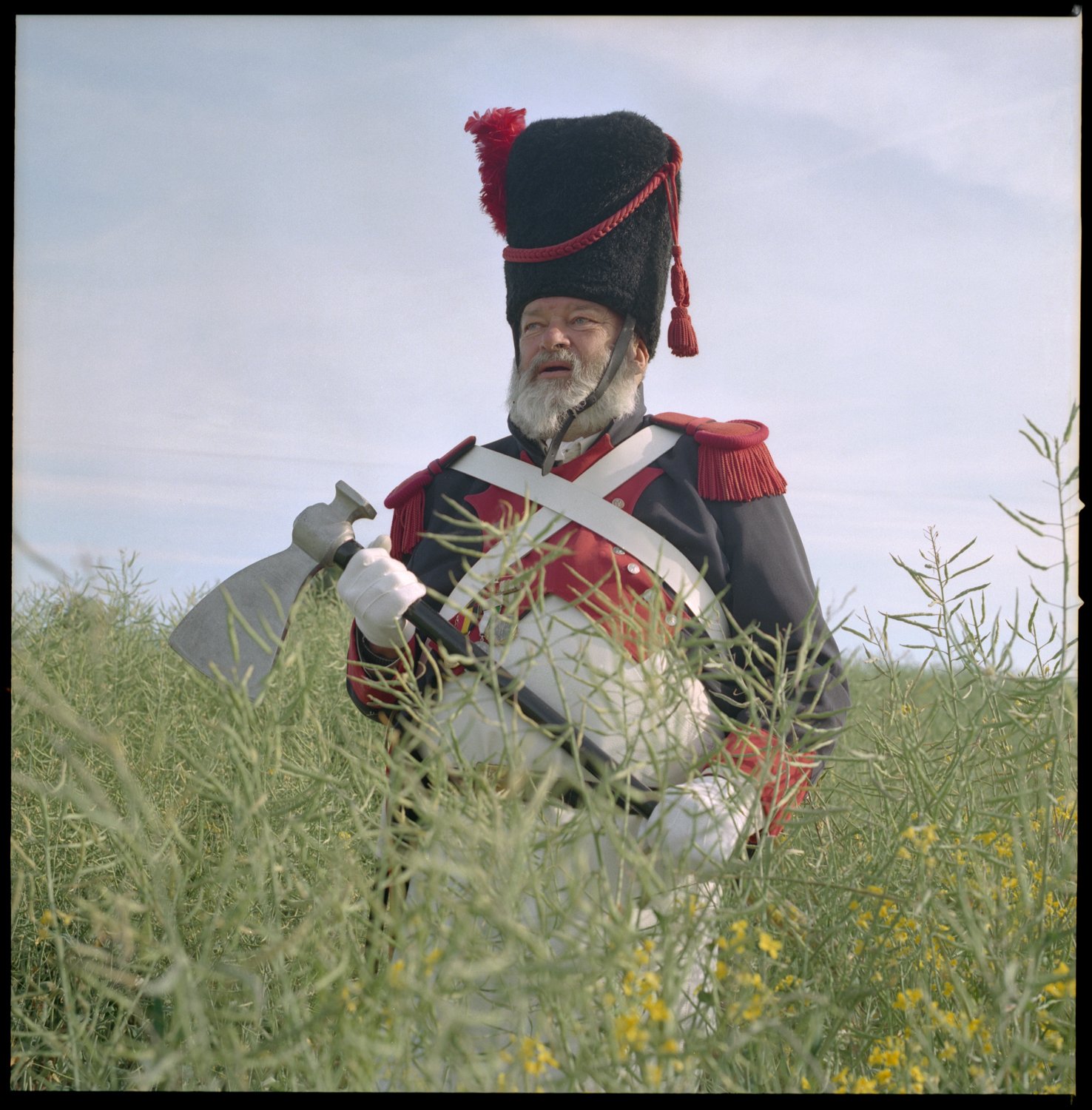
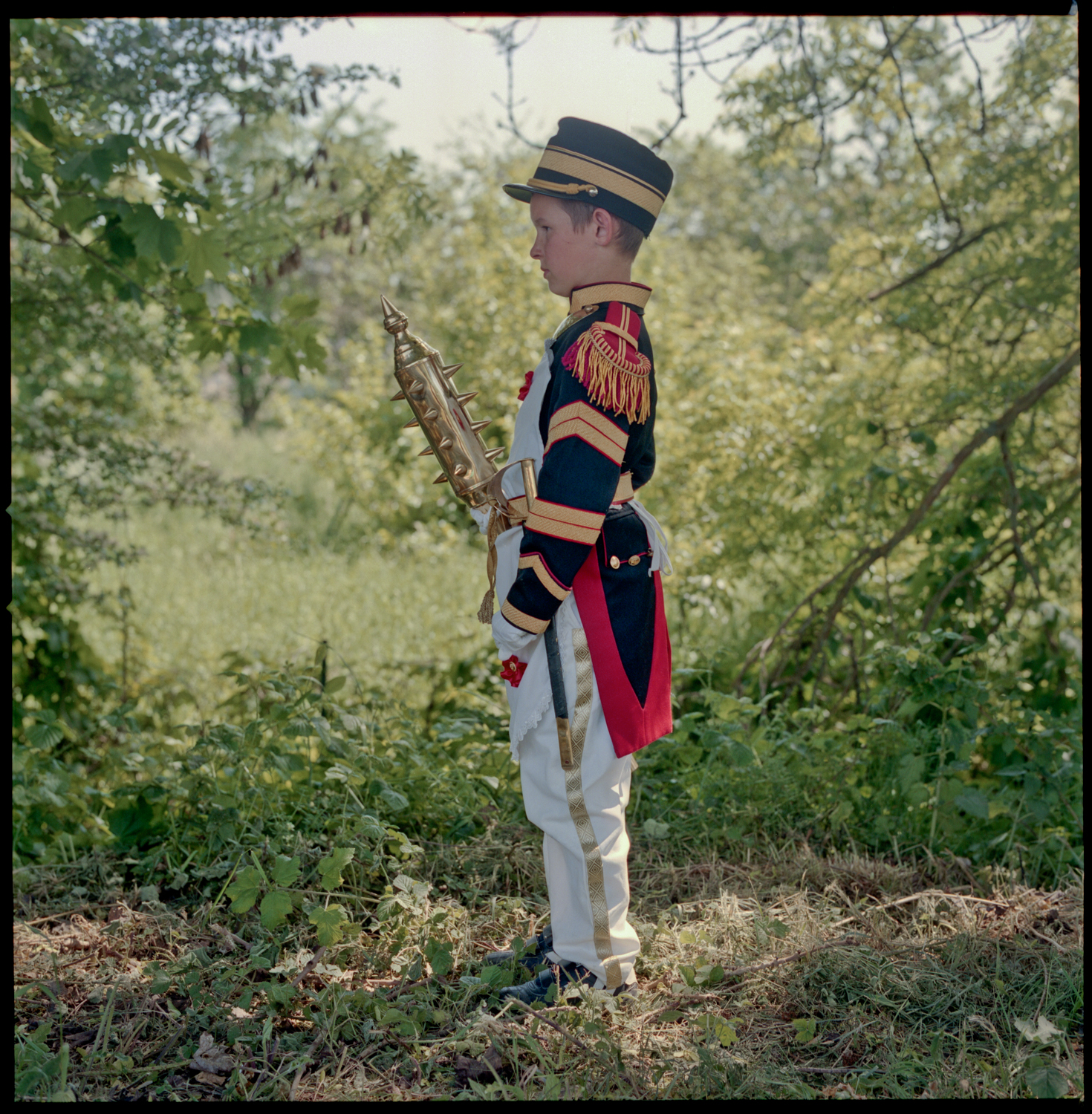


MARCHEURS
BELGIUM | 2011-2012
In a region of Belgium situated between two rivers (the Sambre and the Meuse), a tradition that has disappeared in other parts of the country has been strangely preserved over the centuries. From May to the end of autumn, each entity in the region parades its religious relics around the surrounding countryside to honour the patron saint of the village. Many religious marches are held under the patronage of Saint Roch (Thuin, Ham-sur-Heure, Châtelet, Acoz), who is supposed to have interceded in favour of the population during the plague epidemics of the 17th Century. The armed escorts that usually accompany these processions have secular origins. They come from the urban and rural militias that used to protect the villages and the towns. Over the years, these militias slowly disappeared and adopted more popular functions. The most common one was that of organising festive events in the towns and villages. These groups, generally formed of young unmarried men, have perpetuated the tradition and maintained the military aspect of the escorts, trying their best to source uniforms (from the First and Second Empire and the Belgian Civic Guard) and firearms.
MARCHEURS
BELGIUM | 2011-2012
In a region of Belgium situated between two rivers (the Sambre and the Meuse), a tradition that has disappeared in other parts of the country has been strangely preserved over the centuries. From May to the end of autumn, each entity in the region parades its religious relics around the surrounding countryside to honour the patron saint of the village. Many religious marches are held under the patronage of Saint Roch (Thuin, Ham-sur-Heure, Châtelet, Acoz), who is supposed to have interceded in favour of the population during the plague epidemics of the 17th Century. The armed escorts that usually accompany these processions have secular origins. They come from the urban and rural militias that used to protect the villages and the towns. Over the years, these militias slowly disappeared and adopted more popular functions. The most common one was that of organising festive events in the towns and villages. These groups, generally formed of young unmarried men, have perpetuated the tradition and maintained the military aspect of the escorts, trying their best to source uniforms (from the First and Second Empire and the Belgian Civic Guard) and firearms.